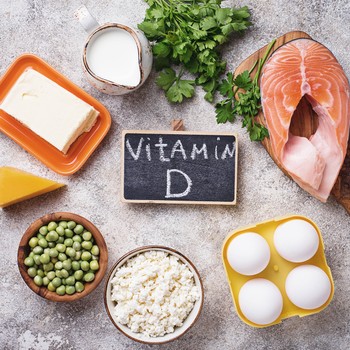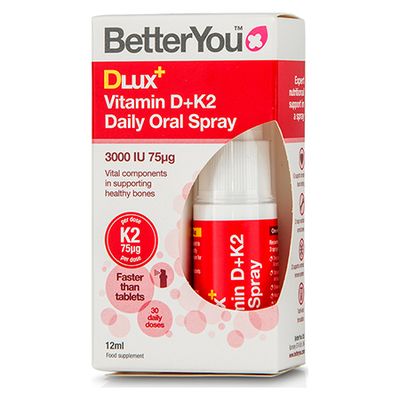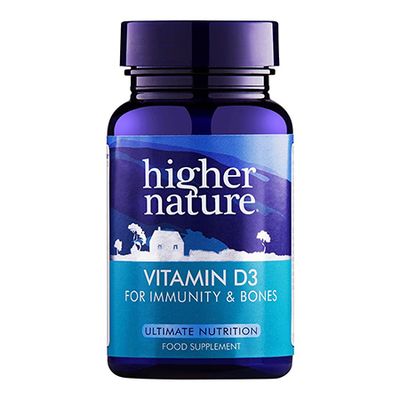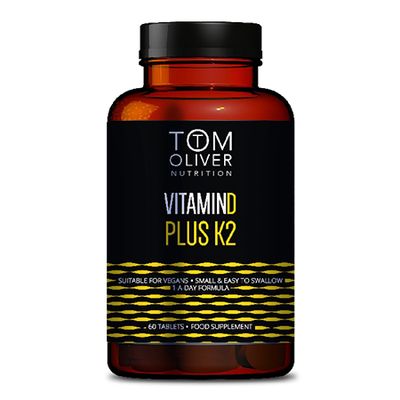What You Need To Know About Vitamin D
It Behaves Like a Hormone
The term ‘vitamin D’ is a little misleading as it behaves more like a hormone. The form of vitamin D you tend to consume (either in food, supplements or indirectly via the sun) is vitamin D3 – your body then converts this into a hormone called calcitriol. Once vitamin D is in this active form, it can travel through the body.
Vitamin D Is A Health All-Rounder
There’s more to vitamin D than a good mood, explains nutritionist Victoria Hamilton. “Most people don’t realise this, but vitamin D is needed for calcium absorption. This can lead to weakened bones, putting you more at risk of osteoporosis,” she explains. Vitamin D is also a main source of fuel for our white blood cells, the body’s first line of defence against pathogens (i.e. bacteria and viruses). Vitamin D can also support healthy blood sugar levels, which has been linked to a lower risk of diabetes. “If that wasn’t enough, vitamin D can also protect you from inflammatory disorders such as multiple sclerosis and rheumatoid arthritis as well as cancer, depression and cardiovascular disease,” Victoria says.
SPF Affects Absorption
Did you know using an SPF15 limits the skin’s vitamin D production by 99%? “Even a very low SPF will prevent UVB rays from reaching your skin, which will put the brakes on vitamin D production,” Victoria explains. “Instead, try to expose skin to the sun for short periods before applying SPF. Being outside in the sunshine for 15 minutes, two to three times a week should keep vitamin D levels topped up. However, on a cloudy day, there are fewer UVB rays, which stresses the importance of vitamin-D rich foods and supplementation.”
Food Sources Are Limited
In theory, it is possible to get more than enough vitamin D from your diet, but as it’s only found in a small amount of foods, it’s best to top this up with sunlight and supplements, Victoria explains. “The best food sources are fatty fish – think mackerel, wild salmon, trout and sardines – while smaller amounts are found in beef, pork, chicken, cheese and egg yolks. Mushrooms are also a fantastic plant-based source but try to pop them on a sunny windowsill to increase their vitamin D content.” A recent study found that when white mushrooms are exposed to UV light, they go from containing small amounts of vitamin D to 824% of your RDA.
Obesity Plays a Part
As Victoria explains, vitamin D3 is a fat-soluble vitamin, which means it is stored in our fat. “A higher body fat percentage can decrease the bioavailability of vitamin D3 by up to 50%, meaning those with a higher BMI are likely to have lower levels of this vital vitamin,” she explains.
Your Age Matters
Other factors that regulate the body’s ability to make vitamin D3 include age – studies show a 70-year-old makes around four times less vitamin D from the sun than a 20-year-old, for instance.
Skin Colour Is Important, Too
Health experts believe skin colour plays a huge role in vitamin D production. Those with darker complexions have more melanin in their skin, providing natural protection from the sun. During the summer months, ten minutes of exposure for someone with fair skin may be sufficient to produce adequate vitamin D, but studies suggest someone with a darker complexion may need up to two hours of exposure to reap the same benefits.
You Can Test Your Own Levels
If you’re suffering from frequent colds, fatigue, muscle pain or low mood, it could be worth getting your levels tested. “Your GP or a private doctor can test your vitamin D levels, although this can also be done at home via a simple test – BetterYou’s Vitamin D Test, £32.95, is a good option,” Victoria recommends.
Choose The Right Supplement
“When it comes to buying a supplement, opt for vitamin D3, which is identical to the form of vitamin D created in your skin,” says Victoria. “Aim for 10mcg of vitamin D daily between October-April and consider supplementing year-round if you have darker skin, are pregnant or breastfeeding, or over the age of 70. However, remember the sun provides the best source of vitamin D – studies show that vitamin D consumed orally or through the diet is not transported as effectively as vitamin D produced from UVB exposure. And when it comes to specific supplements, look for a formula with vitamin K2 for optimal absorption, and try to take with a source of dietary fats (avocado, eggs, nuts, seeds or full-fat dairy) to aid absorption.”
Supercharge your vitamin D with these expert-approved supplements…
DISCLAIMER: We endeavour to always credit the correct original source of every image we use. If you think a credit may be incorrect, please contact us at info@sheerluxe.com.



